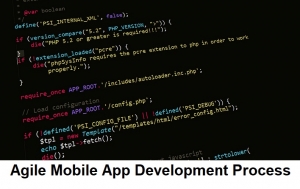The rise of conversational AI has transformed how businesses interact with customers, automate processes, and deliver services. Building a robust conversational AI development platform requires careful consideration of architecture, user experience, and scalability. This comprehensive guide outlines the essential components and strategies needed to create a successful platform that empowers developers to build intelligent conversational applications.
Understanding the Foundation
A conversational AI development platform serves as the backbone for creating chatbots, virtual assistants, and other interactive AI applications. The platform must provide developers with intuitive tools, powerful APIs, and flexible frameworks while abstracting the complexity of natural language processing and machine learning operations.
The foundation begins with defining your platform's core purpose. Will it focus on customer service automation, internal business processes, or general-purpose conversational applications? This decision shapes every subsequent architectural choice and feature development priority. Understanding your target audience—whether enterprise developers, small business owners, or individual creators—influences the complexity and accessibility of your development tools.
Core Architecture Components
The technical architecture of a conversational AI platform requires several interconnected layers. The natural language understanding (NLU) engine forms the heart of the system, responsible for interpreting user intent, extracting entities, and maintaining conversation context. This component typically leverages transformer-based models, either proprietary or open-source, fine-tuned for specific domains and use cases.
A robust dialogue management system orchestrates conversations, determining appropriate responses based on user input, conversation history, and business logic. This system maintains conversation state, handles context switching, and manages multi-turn interactions that feel natural and coherent.
The response generation layer produces appropriate outputs, whether text, rich media, or API calls to external systems. This component must balance consistency with creativity, ensuring responses align with brand voice while remaining engaging and helpful.
Integration capabilities represent another critical architectural element. Your platform should seamlessly connect with popular messaging channels like Slack, Microsoft Teams, WhatsApp, and web chat widgets. Additionally, robust API endpoints enable integration with CRM systems, databases, and third-party services that conversational applications commonly require.
Development Tools and User Experience
Creating an accessible development environment distinguishes successful platforms from technical showcases. A visual conversation designer allows developers to map conversation flows using drag-and-drop interfaces, reducing the barrier to entry for non-technical users while providing power users with advanced scripting capabilities.
The training data management system should simplify the process of importing, labeling, and organizing conversation examples. Developers need tools to easily add new intents, define entities, and manage training datasets without deep machine learning expertise. Automated data augmentation features can help expand limited training sets and improve model robustness.
Testing and debugging tools prove essential for development workflows. Built-in conversation simulators allow developers to test their applications before deployment, while detailed analytics help identify common failure points and user experience issues. Version control for conversation models enables teams to experiment with improvements while maintaining stable production versions.
Scalability and Performance Considerations
A production-ready conversational AI platform must handle varying loads gracefully. The architecture should support horizontal scaling, allowing additional compute resources during peak usage periods. Caching strategies for common queries and responses reduce latency and computational costs.
Model optimization becomes crucial for maintaining responsive interactions. Techniques like model distillation can create smaller, faster versions of large language models while preserving accuracy. Edge deployment options enable low-latency responses for time-sensitive applications.
Database design significantly impacts performance, particularly for conversation history and user context storage. Implementing efficient indexing strategies and data partitioning ensures quick retrieval of relevant information during conversations.
Security and Compliance Framework
Conversational AI platforms handle sensitive user data and must implement comprehensive security measures. End-to-end encryption protects conversation data in transit and at rest. Role-based access controls ensure only authorized personnel can access sensitive information or modify conversation models.
Compliance with regulations like GDPR, CCPA, and industry-specific requirements necessitates built-in privacy controls. Users should easily manage data retention policies, handle deletion requests, and maintain audit trails for regulatory reporting.
Content filtering and safety mechanisms prevent inappropriate responses and protect against adversarial inputs. These systems should operate in real-time without significantly impacting response latency.
Joining Forces with the Right Developer / Development Team
An AI developer equipped with deep machine learning expertise, proficiency in natural language processing frameworks like Transformers and spaCy, and strong software engineering skills can architect sophisticated systems that rival industry leaders. By combining knowledge of modern MLOps practices, cloud infrastructure management, and conversational design principles, skilled developers can create platforms that not only handle complex multi-turn dialogues but also seamlessly integrate with enterprise systems and scale to millions of users. The key lies in mastering both the theoretical foundations of AI and the practical aspects of building production-ready systems that deliver consistent, intelligent conversational experiences.
Analytics and Continuous Improvement
Effective analytics capabilities enable developers to understand user behavior, identify improvement opportunities, and measure conversation success. Key metrics include conversation completion rates, user satisfaction scores, and intent recognition accuracy.
Real-time monitoring dashboards help developers track application performance and quickly identify issues. Automated alerting systems notify teams when error rates exceed thresholds or when unusual usage patterns emerge.
A feedback loop system allows continuous model improvement based on real-world usage. Developers should easily incorporate user corrections, add new training examples, and retrain models with minimal manual intervention.
Deployment and DevOps Integration
Modern development workflows require seamless integration with existing DevOps practices. The platform should support continuous integration and deployment pipelines, enabling automated testing and staged rollouts of conversation model updates.
Container-based deployment options provide flexibility for various hosting environments, from cloud platforms to on-premises infrastructure. Infrastructure as Code templates help developers quickly provision and configure necessary resources.
Monitoring and logging integration with popular tools like Prometheus, Grafana, and ELK stack ensures conversational applications fit naturally into existing operational workflows.
Future-Proofing Your Platform
The conversational AI landscape evolves rapidly, with new models, techniques, and capabilities emerging regularly. Building a platform with pluggable architecture allows easy integration of future improvements without requiring complete rebuilds.
Multi-modal capabilities increasingly become standard expectations. Your platform should accommodate voice interactions, image processing, and other input modalities beyond text-based conversations.
Community and ecosystem development accelerate platform adoption. Providing comprehensive documentation, sample applications, and community forums creates a supportive environment for developers while generating valuable feedback for platform improvements.
Conclusion
Developing a successful conversational AI platform requires balancing technical sophistication with user accessibility. By focusing on core architectural components, intuitive development tools, robust security measures, and comprehensive analytics capabilities, you can create a platform that empowers developers to build engaging, effective conversational applications.
Success ultimately depends on understanding your users' needs, iterating based on feedback, and maintaining technical excellence as the platform scales. The investment in building a well-designed conversational AI platform pays dividends through developer productivity, application quality, and business outcomes for organizations leveraging conversational AI capabilities.





